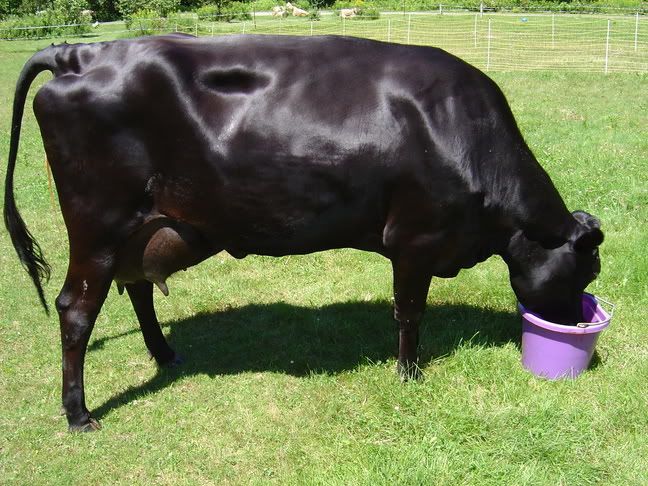Post by Joann on Mar 20, 2007 12:42:44 GMT -5
The thread entitled Managing (growing deliberate) Pasture began to drift off topic following my query regarding putting chicken factory (CAFO) waste on pasture. Pat made the important point that poultry waste may have excessive phosphorus. Because of its high nitrogen level, it is also worth remembering that chicken manure from any source must be used with discretion. Farmschooler quoted Joe Salatin, a well known writer on sustainable agriculture who has developed the chicken tractor concept to a high level. The quote in its entirety can be found in Michael Pollan’s 2006 book Omnivore’s Dilemma. The chicken tractor is a cage unit that is dragged to a new position on the pasture each day or whenever the chickens have worked over their spot. As we have probably all experienced in one way or another, chickens can create scorched earth irrespective of the nature of their diet, so users of the method have to stay on the job.
Poultry waste is widely used on hay fields and pasture by Maine dairy farmers. Maine dairy cows and their pastures don’t appear to be suffering with applications at current levels but I need to learn some more specifics. One consideration is that layer CAFO’s use different feed than do broiler CAFO’s. What we have in Maine are layer CAFO’s. Layers are unable to tolerate some of the agents used in broiler rations. A comparison might be made with feedlot cattle and dairy cattle. Feedlot cattle consume a ration so high in corn that the rumen is overwhelmed thus placing them in a race with death on their way to market weight. CAFO dairies also feed large amounts of corn and soy but in addition feed long fiber to support health and milk production and they use fewer drugs and other amendments.
Arsenic has a centuries long history as a stimulant and has been used to promote growth in broiler rations at least since the 1960’s; that is when I first heard it mentioned. It would be interesting to know how much of it stays in the carcass and how much is excreted to contaminate the environment. Maine has a problem with arsenic, a recognized carcinogen, in soil and water. People buying homes commonly have the premises tested for arsenic and contracts have a contingency clause in case levels exceed state standards. Yet the presence of arsenic in chicken feed has seldom been challenged.
None of the above actually answers the question as to whether there is any reasonably safe way to use CAFO poultry waste. Bear in mind that it is completely free. Bear in mind also that it unquestionably increases pasture growth and results in hay which cows, foolishly or otherwise, clearly like. Those of us not able to afford organic feed devoid of pesticides, herbicides and GM grains already know something about compromise. I made the decision last year to buy organic feed for my cows so am unlikely to be ordering a dump of poultry manure on the home fields. But there is another field across the river which will not have animals on it for several years. This field is badly starved. Might CAFO waste do it more good than harm, the evils dissipate before it receives livestock?
How poultry is killed and handled is a separate topic from poultry CAFO waste. The birds are processed at a separate location and the guts enter a different stream, much going to pet food.
I first learned of the practice of immersing killed poultry in a water bath in the late 1940’s from one of my husband’s classmates when we were taking animal husbandry courses at UC Davis. The young man’s parents operated a poultry slaughterhouse. I was dismayed to learn that their reason for doing this was so that the veins in the bled carcass filled with water thus increasing carcass weight: the customer gets to pay chicken prices for water. The slash and vacuum method of evisceration was not in use until somewhat later. It is this high speed method which accounts for the contamination of the water bath and infusion of the carcass with fecal material. This is the meat which nutritionists have been pushing for thirty years as healthy and preferable to beef. As so many of us on this forum have stated, it is this sort of thing that makes us want to produce our own chicken rather than relying on “Safe handling methods” whereby we must treat our store bought chicken like a toxic substance.









